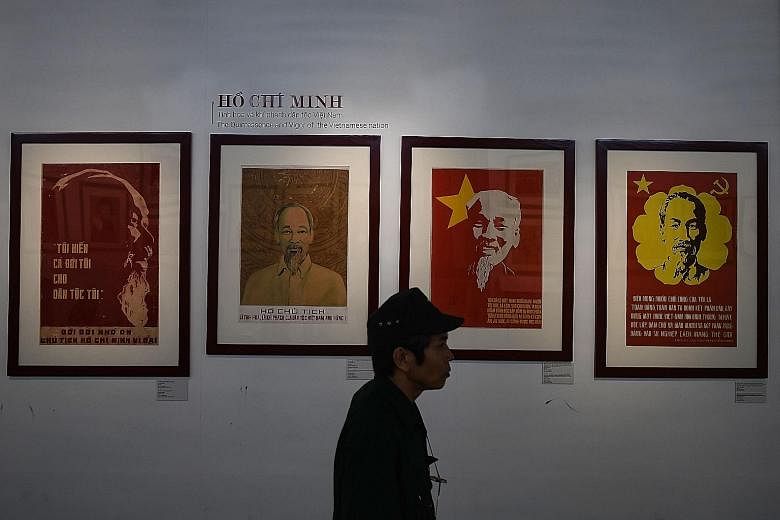HANOI • The task of safeguarding the embalmed corpse of Vietnam's revolutionary leader Ho Chi Minh is gruelling - carefully selected riflemen work around the clock, watching over the communist nation's founding father, who died 50 years ago today.
Protecting him is the ultimate patriotic service for men in stiff white uniforms at Ho's towering tomb in Hanoi, a monolithic shrine to a man who still pervades public life despite his fading relevance among young people.
The job is a "dream come true" for guard Nguyen Xuan Thang, even if it is not always easy. "We have to have our eyes on everything to deal with any situation that may arise," said the 41-year-old lieutenant-colonel.
All year round, he works up to four two-hour shifts every day - often outside the tomb in the blistering summer heat, monsoon rains, or frigid winter weather. Some days he works inside the cool, dark chambers where Ho's waxy body - his wispy goatee still intact - is on display for daily pilgrimages by schoolchildren, tourists and war veterans who come to pay their respects.
"The body of president Ho Chi Minh has been kept in very good shape," said Major-General Cao Dinh Kiem, a senior member of the team in charge of guarding the mausoleum, which opened in 1975.
Rumours abound in Vietnam that the body might not really be Ho, or that he is sent to Russia yearly for maintenance, which the major-general dismissed with a smile.
Four Russian and seven Vietnamese scientists were hired this year to evaluate Ho's body ahead of the 50th anniversary today.
Leaning on Russian embalming expertise is not new in Vietnam. Ahead of Ho's death in 1969 - and behind his back - his aides turned to allies in the Soviet Union to ask how they preserved their own communist founding father, Vladimir Lenin, who is still entombed in Moscow's Red Square. Vietnam struck up a deal with the Soviet Union to receive embalming materials and guidance from their experts.
The deal died after the collapse of the Soviet Union in 1991, and Hanoi scrambled to replace it with a commercial arrangement for the exchanges, which remains in place today. Considered state secrets, the details of that arrangement cannot be publicly shared, not even with allies North Korea or China.
Ho did not live long enough to see the end of the war against the US-backed South in 1975, when North Vietnamese tanks rolled through former southern capital Saigon, later renamed Ho Chi Minh City.
But for Vietnam's booming young population - around half the country is under 30 - Ho figures as a distant historic character, far removed from the thriving capitalism, ubiquitous social media and yearning for freedom that preoccupies most of the smartphone-obsessed youth today.
AGENCE FRANCE-PRESSE

